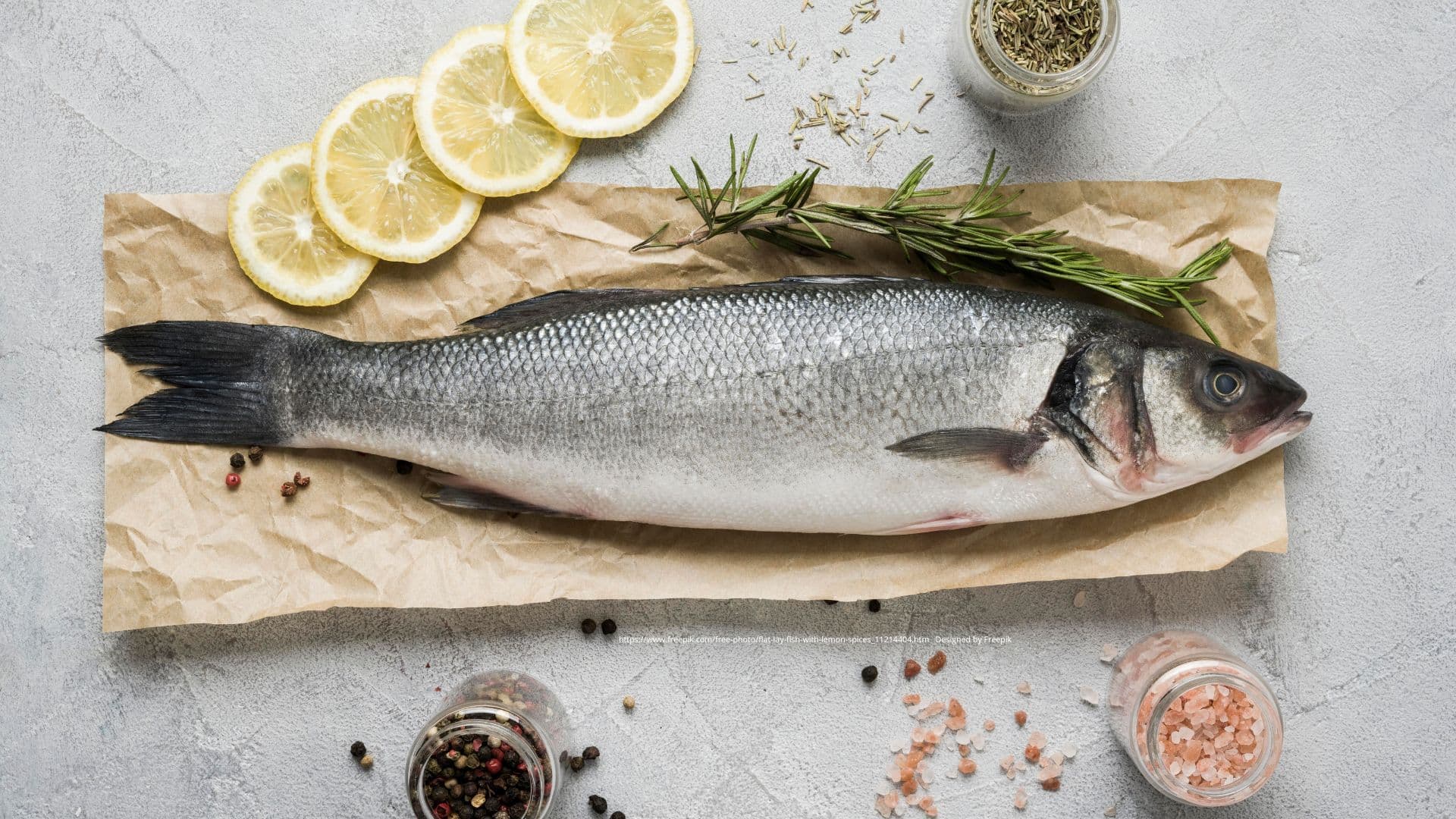
Fish, Sea and Halophytes
Freshly caught fisch from the Wad is available in the several fish stores and stalls at the island.
Smoked mackerel
Smoked mackerel is a popular fish species on Terschelling that is eaten a lot. Especially in the months of August and September, when they are caught by professional, sports and recreational fishermen. Usually this type of fish is smoked immediately after the catch. This is the reason why there is often a smoking barrel along the bicycle paths during that period. And if you don't see it, you can smell it from afar.
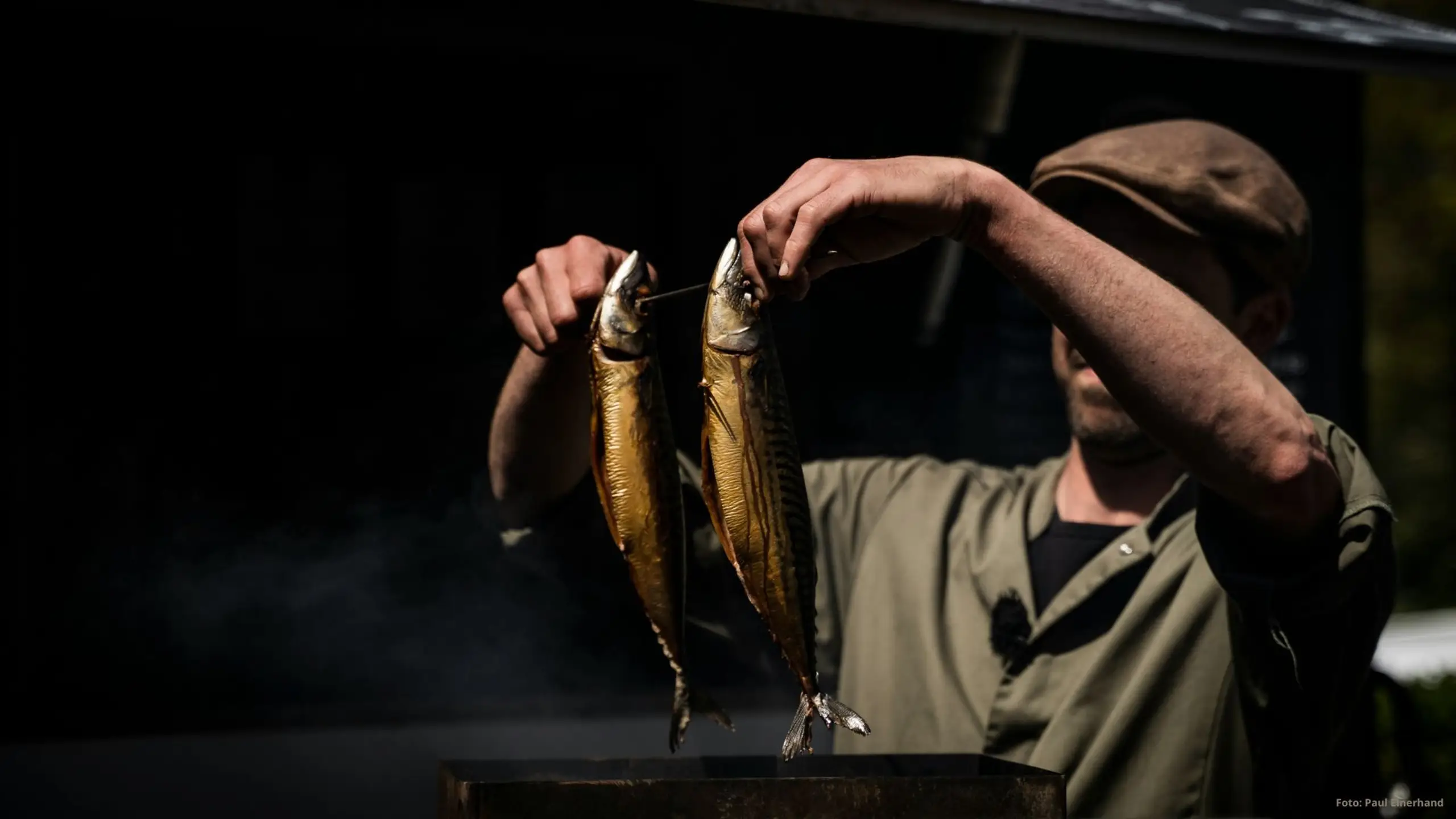
Sea bass
Sea bass is related to the freshwater bass, which it also somewhat resembles. The fish only tastes a bit spicier than its freshwater relative and has considerably less bones. You will seldom find it on the menus of Dutch restaurants, although its popularity is growing. Sea bass is regularly caught around the island. That's why it is sometimes found on the menu in restaurants. The fish meat is lean, white, firm and deliciously juicy.
Every year a sea bass competition is held by the local fishing club. Then there is a fight for the sea bass trophy. In many places around the island in the summer you will see fishermen fishing from the North Sea beach or the Wadden dike near the harbor mouth.
Are you planning to go fishing yourself? In some places you can buy bait (ragworms). This is indicated by signs along the road and the cycle paths. Rods and accessories are for sale at Jonker in West-Terschelling and also for rent at 'T Winketje in Midsland Noord.
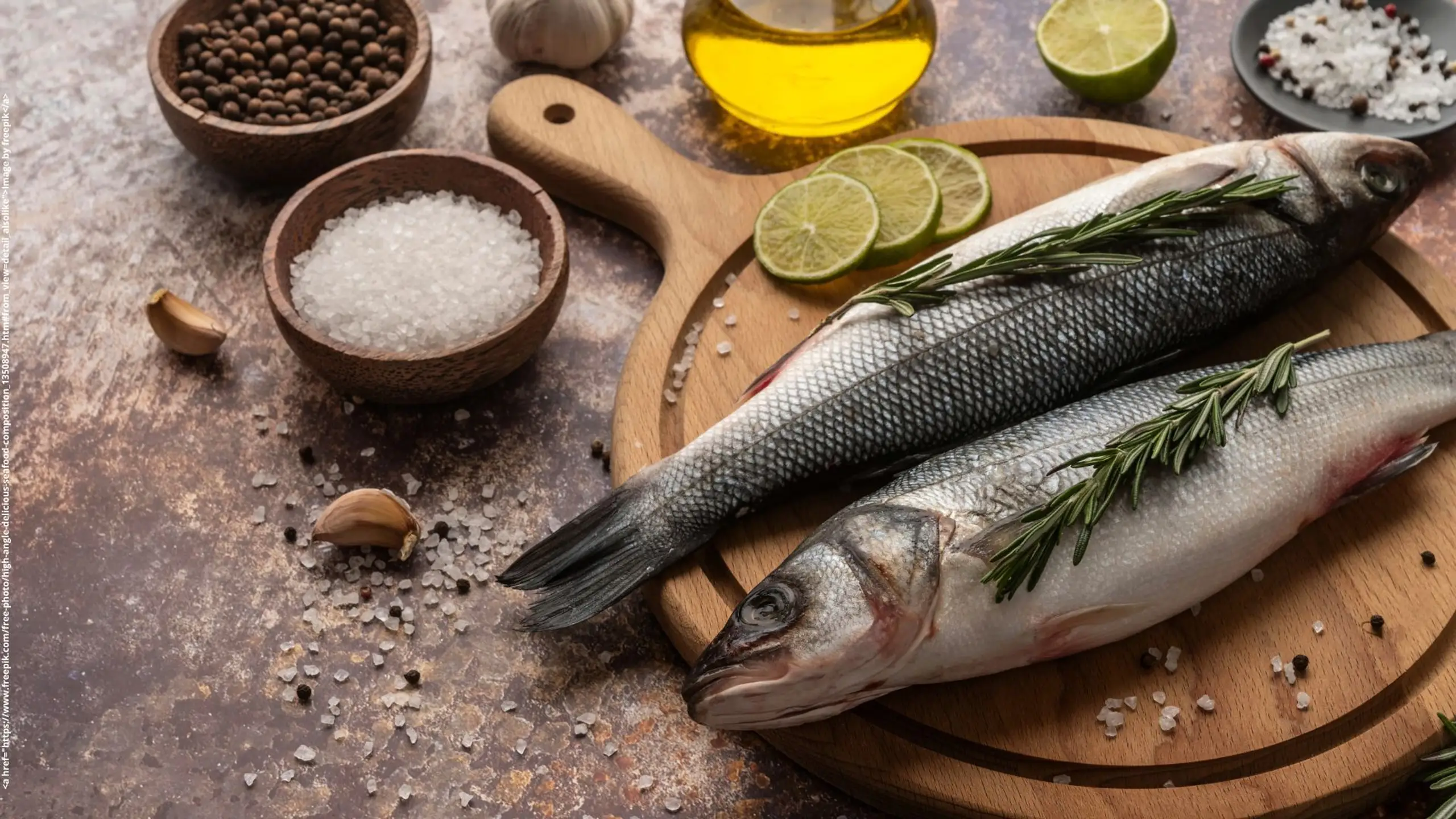
Flatfish
The common sole is a flatfish found in the Wadden Sea around Terschelling. Known for its soft, mild flavor and delicate texture, this flatfish is easy to prepare and is served in several restaurants on the island, often fried or grilled. It pairs well with simple, fresh ingredients that highlight the fish’s natural taste. Sole is a popular choice for seafood lovers and is a delightful part of Terschelling’s culinary offerings.
Mussels
The mussel (Mytillus Edulis) is a marine living bivalve mollusk. The species is also called the common or edible mussel. In the Netherlands and Lower Saxony, most mussels are fished in specially constructed breeding plots. In spring and autumn, mussel seed is fished from natural mussel beds. These are young mussels. This seed is deposited on plots in the Wadden Sea. Once the mussels have reached a size of 4 to 5 centimeters, they are fished up and put into other plots that are deeper.
When the cultivated mussels are large enough for consumption, they are fished up and released into the cleaner Eastern Scheldt. Here the mussels can rest and get rid of sand and silt. After this 'rinsing' they are sold as Zeeland mussels. Every year, between 80 and 100 million kilos of mussels are put on the market.
The edible mussel is cultivated on mussel beds in the Oosterschelde, the Wadden Sea and the Grevelingen. These plots are leased by growers from the Dutch state. Until about 1950, all Dutch mussel production came from Zeeland. After the contamination with a parasite in this area, a large part of the mussel cultivation was moved to the western Wadden Sea. In restaurant Caracol mussels are served from the wild mussel beds near Terschelling.
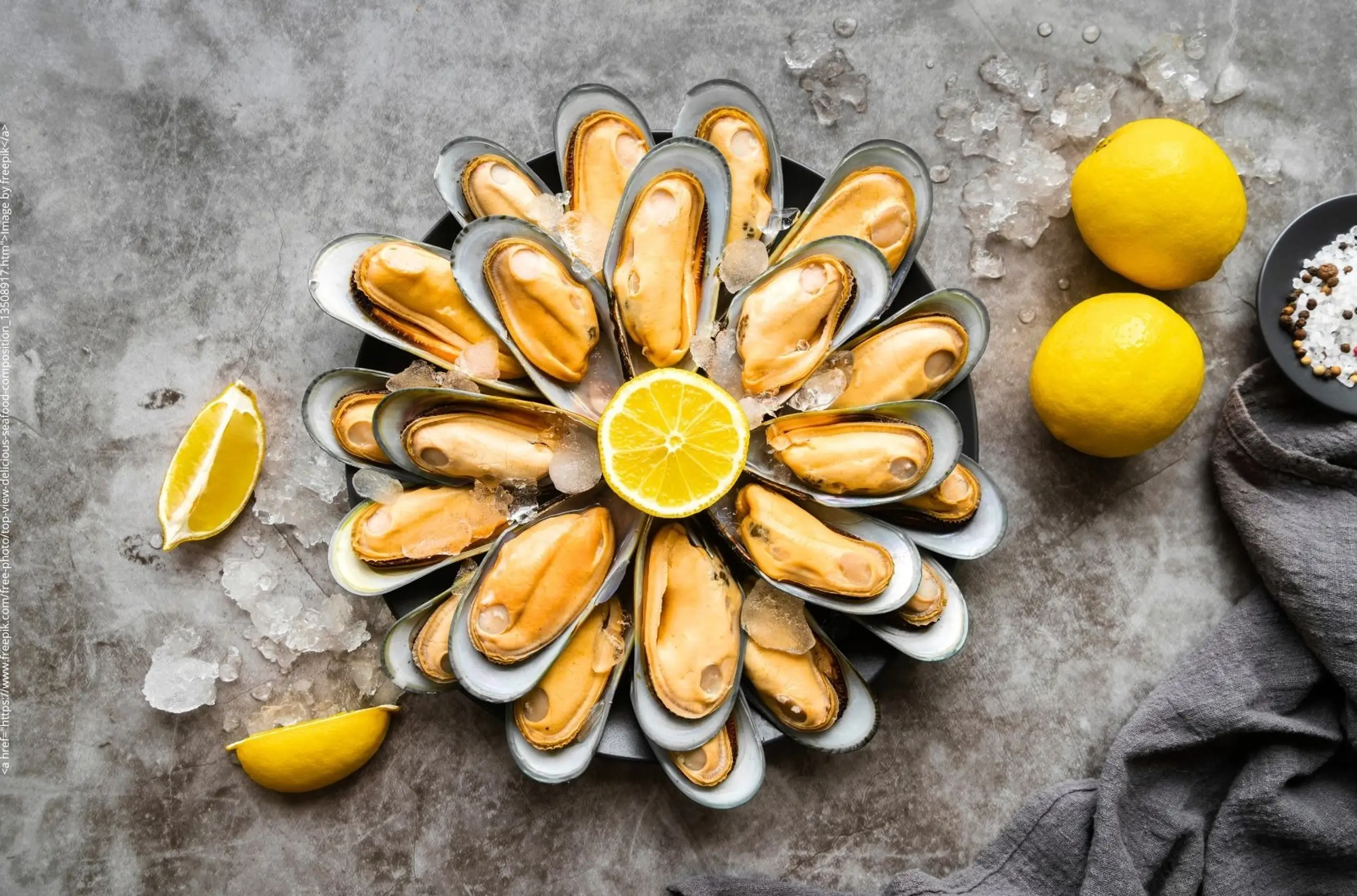
Pacific oysters
The Pacific oyster (Crassostrea Gigas) is an edible mollusk of the class bivalves (Bivalvia). It is capable to establish itself by filtering and consuming the 'seeds' of mussels, cockles and flat oysters from the water. Besides the waters of Zeeland, it is increasingly found in the Wadden Sea. Be careful when you go look for oysters. They are very sharp and can cause serious injuries.
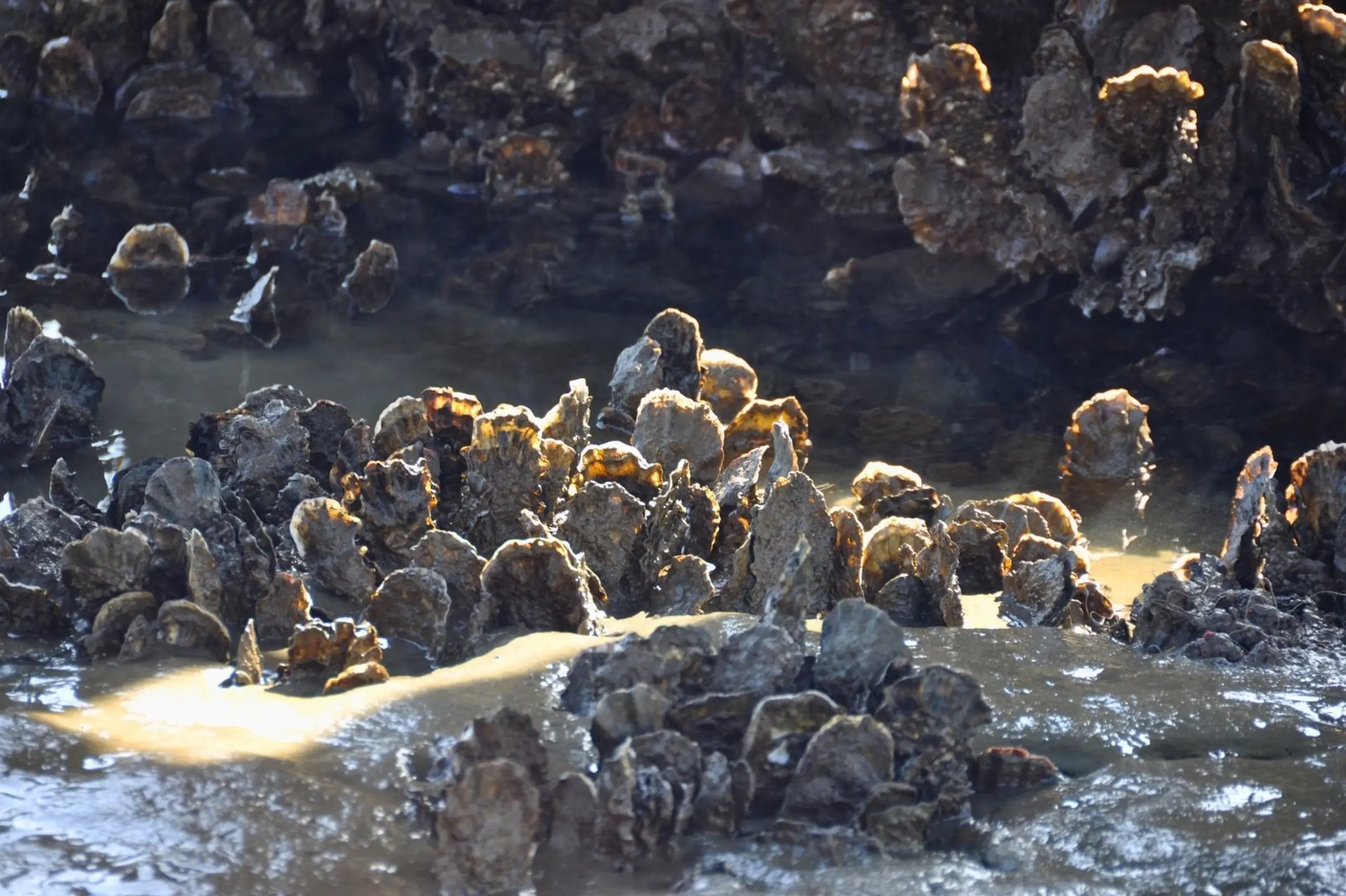
Cockles
The Wadden are also the catching area for cockle fishermen. Almost the entire catch is exported to England, Spain and Portugal. You rarely see cockles being offered in the Netherlands. Yet, there are delicious things to do and make with them. Enjoy your own cockles and use them to make pasta vongole, for example.
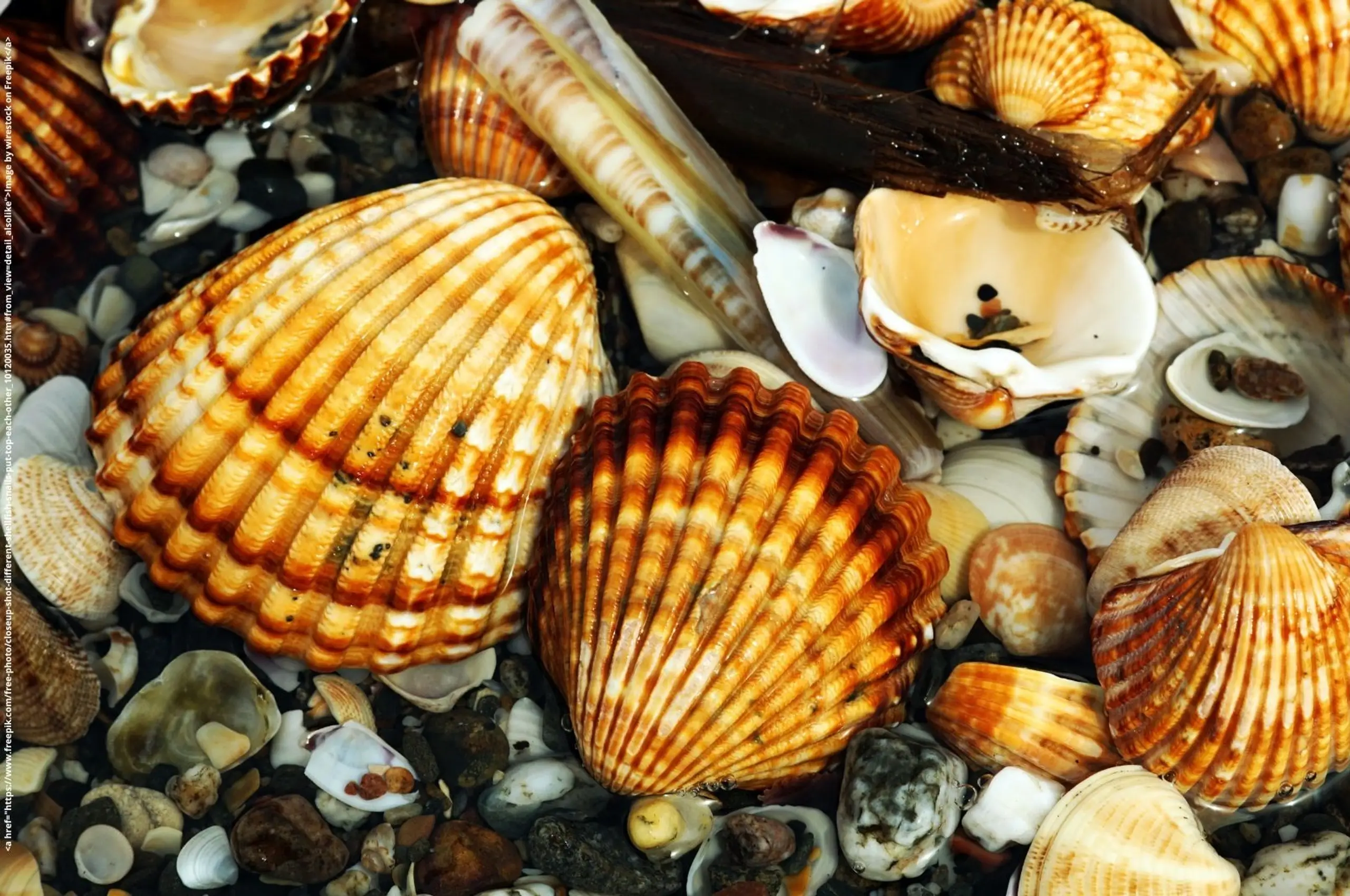
Periwinkles
Periwinkles, calles 'wrinkles' on Terschelling, graze the mudflats in search of plant food. The tiny snails in their spiral-wound shells can be found by large amounts on the stones of the dike or the harbor dams during high tide. In a number of restaurants of the island, periwinkles are on the menu as an appetizer. It takes some effort to get the little shellfish out of their home with a pin.
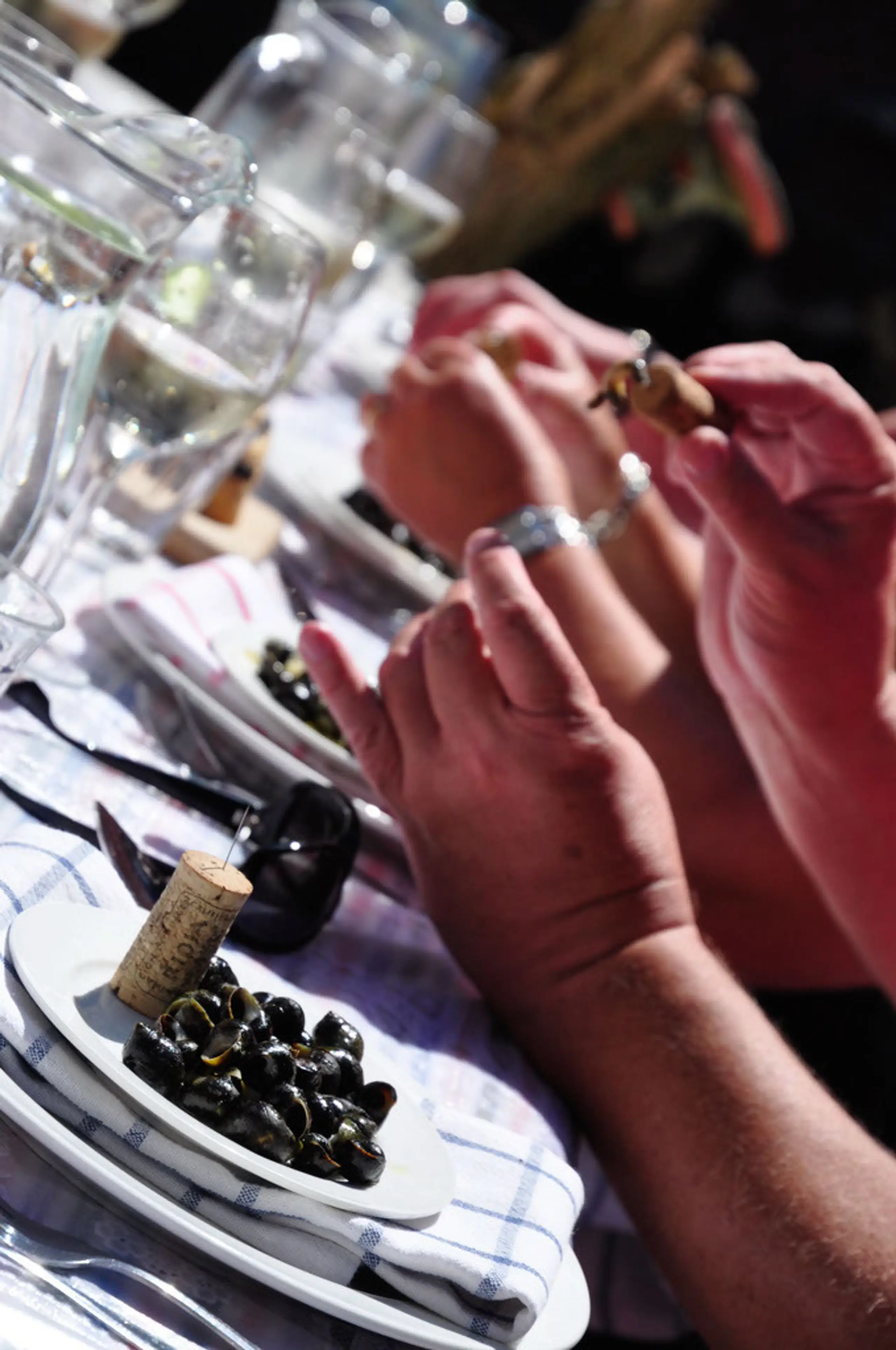
Samphire
Marsh samphire looks like a cactus (succulent) plant. You find it where the salt water can reach the coast at high tide. In other words, on the mud flats. For example, on the Groene Strand in West-Terschelling. It is a real pioneer and therefore also called the pioneer plant. The healthiest plants are those that are inundated at high tide. The salty samphire can be eaten raw or cooked. However, use only the top pieces because the bottom is woody hard. Its high iodine content makes samphire a very healthy vegetable. Marsh samphire can be served with, of course, fish dishes.
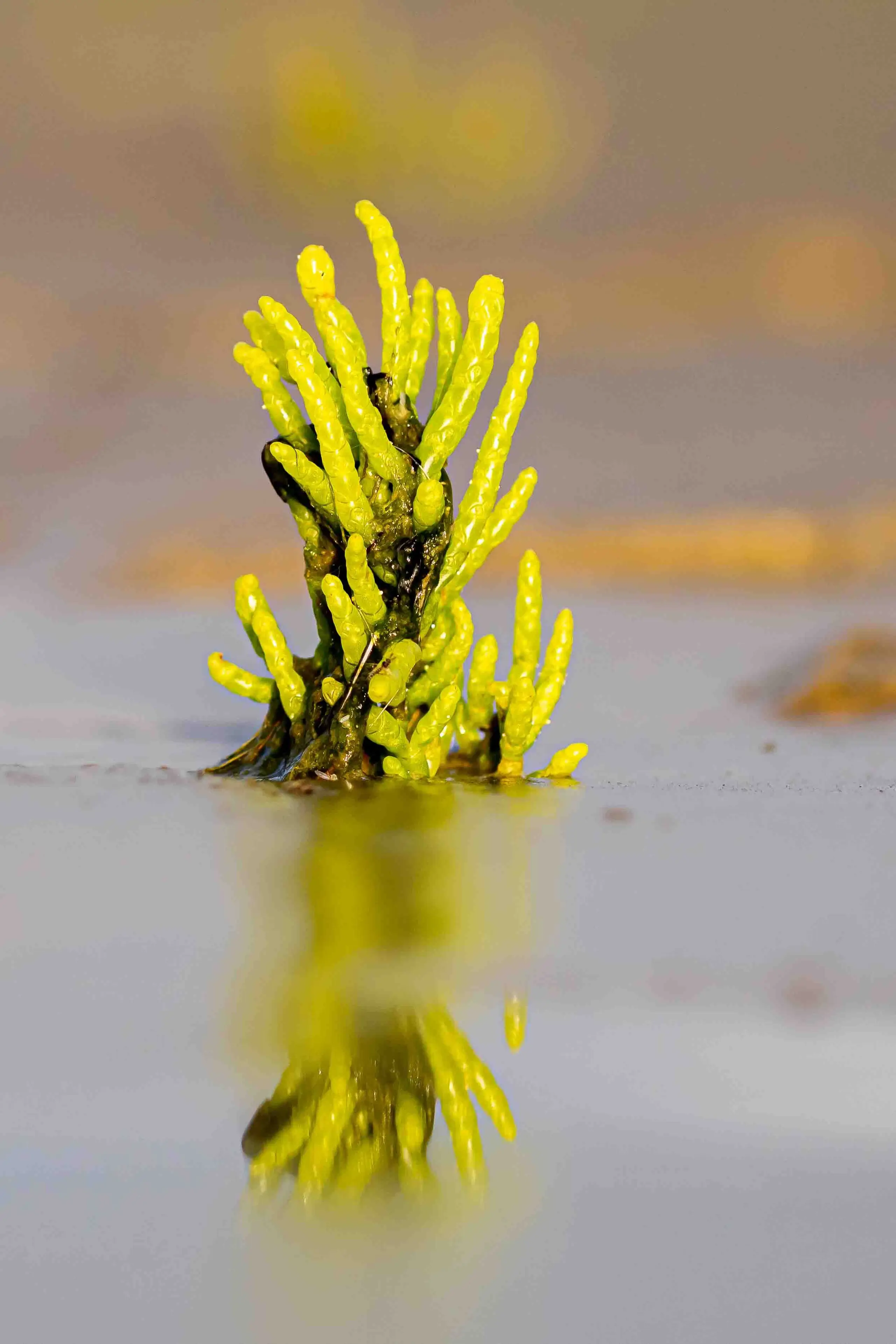
Sea aster
Sea aster is found along the coast of Terschelling and has distinctive, blue/purple flowers and green leaves. The young leaves of the sea aster are edible. The leaves have a deliciously salty taste and are full of minerals and vitamins. It is slightly reminiscent of spinach. Delicious in a salad, stir-fried or stewed briefly. Sea aster leaves are also sold in shops as sea lavender. It looks very similar and is often confused with each other, yet real sea lavender is not good to eat. This leaf is firm and somewhat tough. However, real sea lavender is very tasty for wild bees, which in turn results in delicious sea lavender honey.
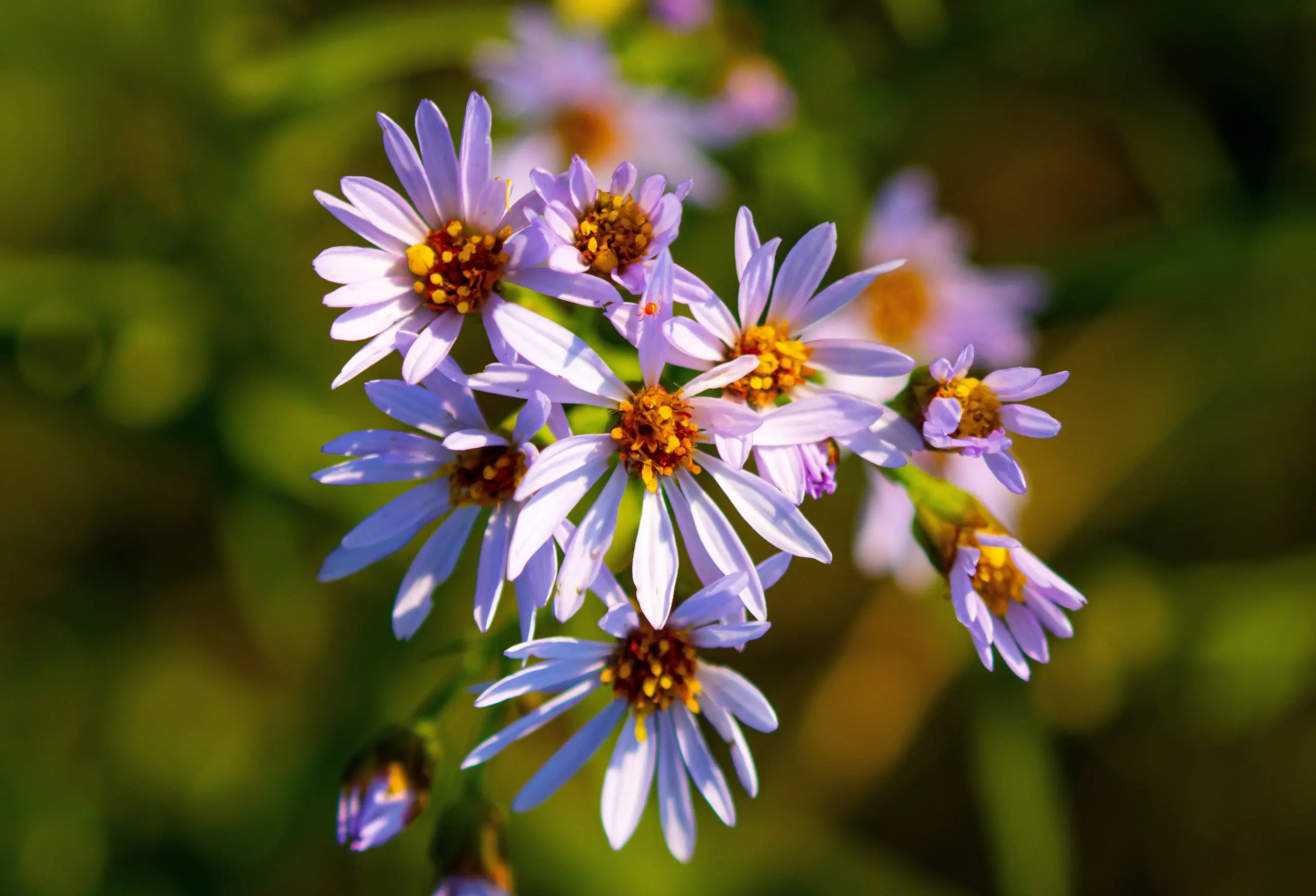
Sea rocket
One of the plants you may come across while walking on the beach is the sea rocket, a pale green fleshy plant with pale lilac flowers that smells like honey. A fully grown plant has the appearance of a small bush. You can find the plant on the young dunes emerging on the beach and along the dune foot, among other places.
The sea chafer grows in places where organic material is buried under the sand, such as washed-up pieces of seaweed, dead crabs, wreck wood or remnants of rush grass or marram grass. The dunes where the sea kelp grows are high enough to collect fresh rainwater. This is just enough to allow plant growth. The sea rocket's fleshy leaves can hold the fresh water for a long time. The sea rocket is also resistant to the salty water that splashes over the young dunes at high tide and wind from the sea. The beauty of the sea rocket is its long flowering period: you can find flowering plants from pre-summer to autumn and these are visited by many insects because of the honey.
Sea rocket belongs to the crucifer family (Brassicaceae), just like mustard, horseradish, radish and rocket. Zeeraket is edible and spicy in flavour. The plant also contains a lot of vitamin C. The really young leaves are less bitter in taste and are sometimes used in salads. In the past, the roots of sea rocket were pulverised and mixed with flour to bake bread.

Seaweed
Seaweed grows in the Wadden Sea around Terschelling. It is a versatile ingredient, packed with minerals and vitamins. Several restaurants on the island incorporate seaweed into their dishes. This not only makes the meals nutritious but also gives them a unique salty flavor that perfectly complements the culinary traditions of Terschelling.
Salty ice plant
Icewort is a salt-loving plant that grows on Terschelling, especially in the tide area. The plant has fleshy, green leaves and a mild, slightly salty flavour. It is often used for in salads and fish dishes, adding a fresh, salty touch.
Pyrenean Scurvygrass
Pyrenean Scurvygrass grows along the salt marshes and in the coastal areas of Terschelling. The plant has spoon-shaped leaves and a mild, salty flavour. It is a versatile ingredient that can be used in salads and soups to add a subtle salty flavour.
Pigface plant
Pigface plant grows on the beach and along the dune edges of Terschelling. With its long, narrow leaves with a spicy salty flavour, it is a unique addition to salads and as a garnish for fish and shellfish. It adds an interesting texture and flavour to dishes.
Sea fennel
Sea fennel is a plant that grows between the rocks along the coast on Terschelling. The plant has a delicate flavour that tastes a bit like asparagus. Sea fennel is often used in fish and meat dishes, where it adds a subtle, salty flavour.
Sea kale
Sea kale, with its robust leaves and rich flavor, is a versatile vegetable that can be eaten both raw and cooked. The leaves of sea kale have a slightly bitter taste. Together, these salt-tolerant vegetables contribute to a diverse array of flavors in the kitchen.
Note: No wild picking is allowed due to the protected status of the plants. However, you can taste the salty vegetables at several entrepreneurs on the island.
Sign In
Do you want personal tips for your holiday? Then sign up for the newsletter

